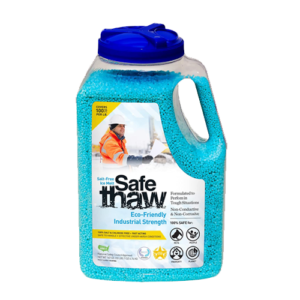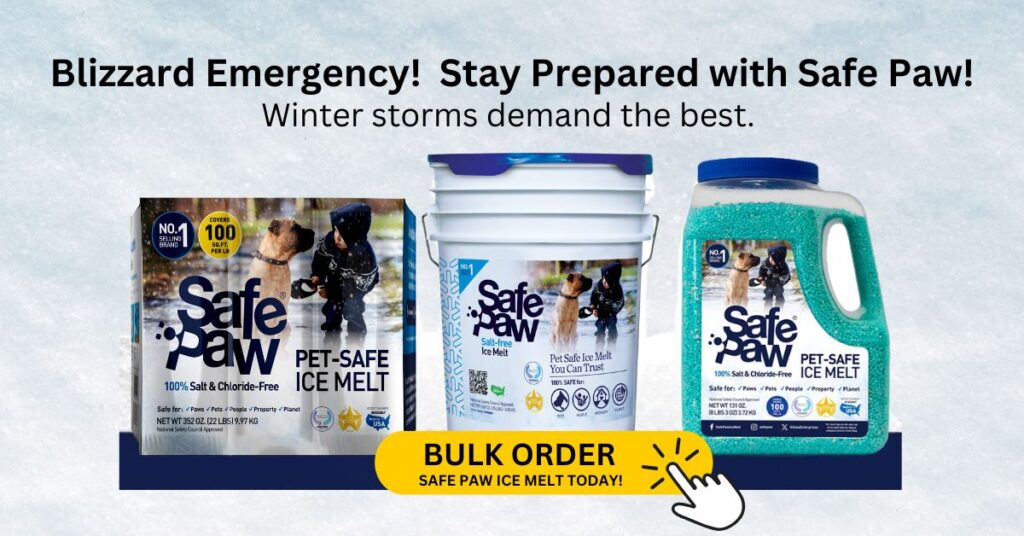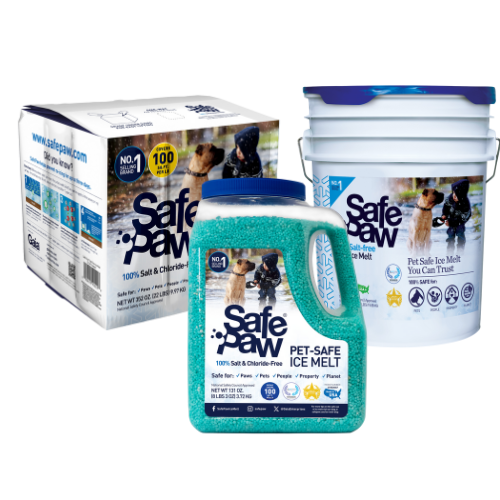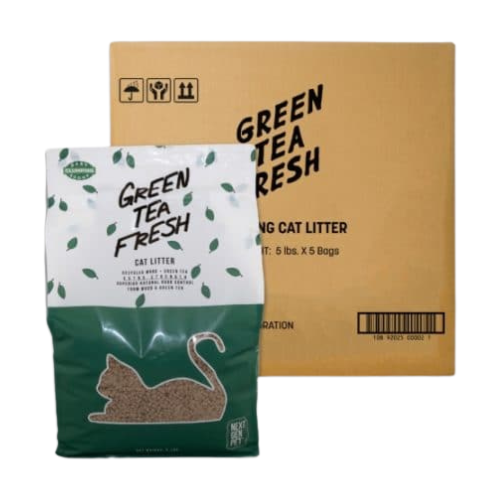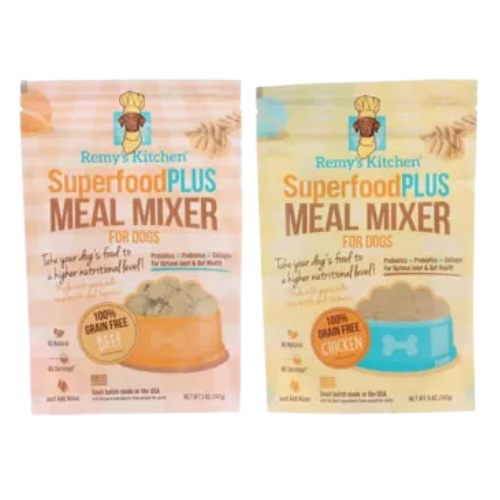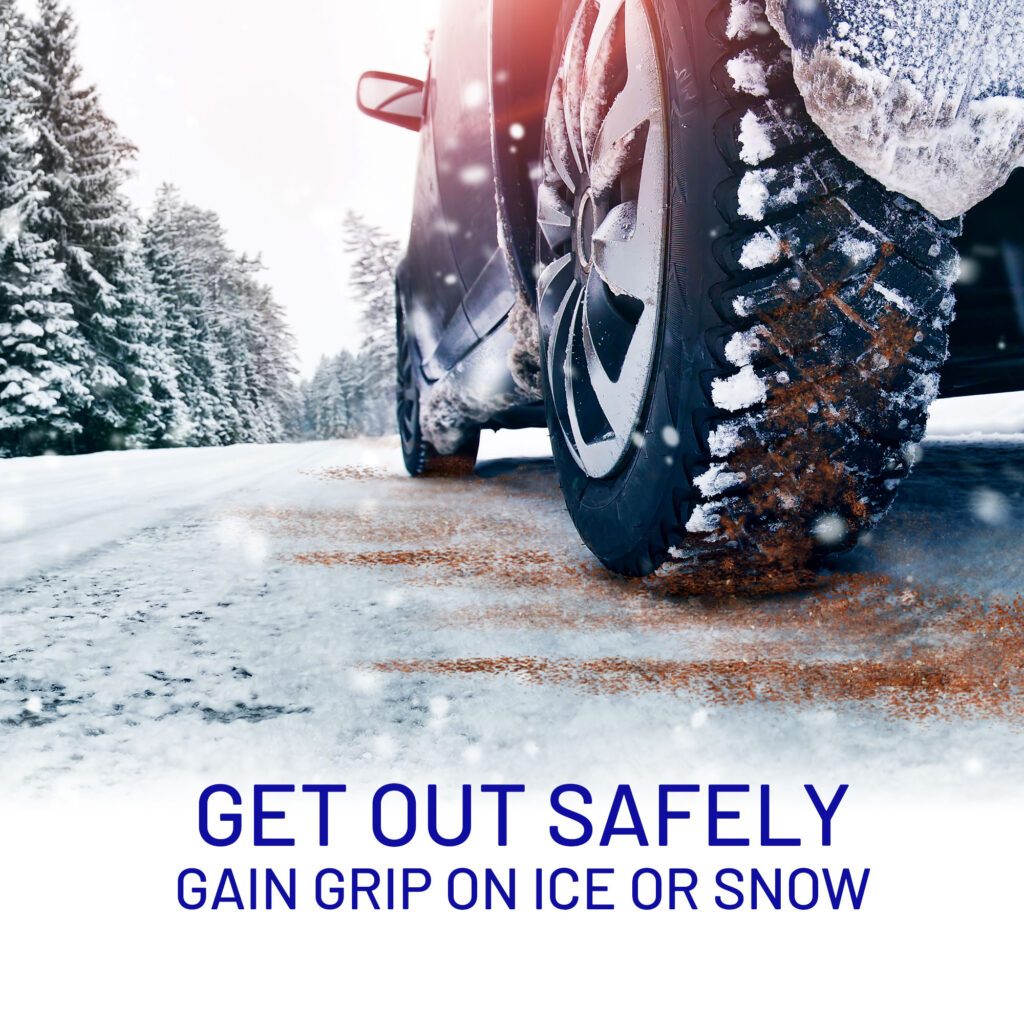Safe Paw vs. Other Ice Melting Products: Why It Stands Above the Rest
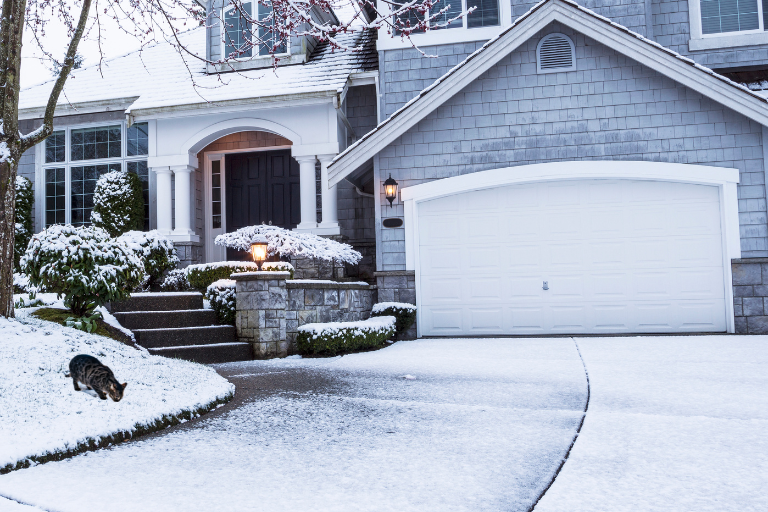
When winter arrives, homeowners and businesses scramble to find the best solution for ice and snow management. From chemical-based deicers to heated driveway mats, there are many options available. But how do these compare to Safe Paw, the leading pet-safe and eco-friendly ice melt? This article takes an in-depth look at Safe Paw vs. various competitors, helping you make an informed decision.
Why Safe Paw Stands Out?
Safe Paw is a 100% salt-free, non-toxic, and chloride-free ice melt, making it the safest option for pets, children, driveways, and the environment. Unlike chemical-based ice melts and alternative heating solutions, Safe Paw does not cause damage to concrete, plants, or waterways.
Pet Safe Ice Melt
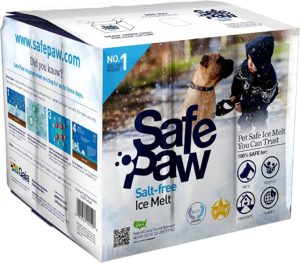
Pet Friendly Ice Melt – Safe Paw!
The Original and the #1 Child and Pet Safe Ice Melt for over 20 years. Guaranteed environmentally safe – will not harm waterways and sensitive wetlands.
Comparing Safe Paw to Alternative Ice Melting Methods
Below, we compare Safe Paw with traditional chemical deicers, heated driveway mats, heat pads, non-slip solutions, and other popular alternatives.
| Product Type | Pros | Cons | Safe for Pets? | Safe for Concrete? | Environmental Impact |
| Safe Paw (Best Pet-Safe Ice Melt) | ✅ Non-toxic, salt-free formula✅ Safe for pets, children, and the environment✅ Prevents refreezing for 72 hours✅ Won’t damage concrete or landscaping | ❌ May take a few minutes longer to start melting ice compared to chemical alternatives | ✅ Yes | ✅ Yes, even on new concrete (over 12 months old) | ✅ Environmentally friendly |
| Road Salt (Sodium Chloride) | ✅ Inexpensive & widely available | ❌ Highly corrosive to concrete & metal❌ Toxic to pets❌ Harms plants & water sources | ❌ No – causes paw burns & ingestion risks | ❌ No – corrodes surfaces over time | ❌ Harms vegetation & water systems |
| Calcium Chloride | ✅ Fast-acting✅ Works in very low temperatures | ❌ Leaves oily residue❌ Harsh on pet paws❌ Corrosive to concrete over time | ❌ No – can cause burns on paws | ❌ No – can lead to concrete damage | ❌ Can harm waterways & wildlife |
| Magnesium Chloride Brine | ✅ Effective in lower temperatures | ❌ Attracts moisture, leading to slippery conditions❌ Potentially harmful to pets | ⚠️ Moderately safe but can cause irritation | ❌ No – can erode surfaces over time | ❌ May lead to groundwater contamination |
| Potassium Chloride | ✅ Less toxic than other salts | ❌ Not very effective below 15°F❌ Can be harmful to plants in high concentrations | ❌ No – can still irritate paws | ❌ No – still leads to surface wear | ❌ Harmful to plants & aquatic life |
| Heated Driveways | ✅ No need for deicers✅ No refreezing issues | ❌ Extremely expensive installation & operation costs❌ Requires professional installation | ✅ Yes | ✅ Yes | ❌ High energy consumption |
| Snow Melting Mats | ✅ Provides localized melting✅ Easy to install | ❌ Requires electricity❌ Limited coverage | ✅ Yes | ✅ Yes | ❌ Electricity usage increases energy bills |
| Electric Heating Pad | ✅ Helps in small areas✅ Portable | ❌ Not a full-scale deicing solution❌ Limited effectiveness on thick ice | ✅ Yes | ✅ Yes | ❌ Requires electricity |
| Non-Slip Stair Treads | ✅ Provides traction✅ Reusable solution | ❌ Does not melt ice❌ Limited effectiveness if covered in snow | ✅ Yes | ✅ Yes | ✅ Eco-friendly |
| Pet Heating Pad | ✅ Keeps pets warm indoors | ❌ Not designed for melting ice | ✅ Yes | ✅ Yes | ✅ Eco-friendly |
1. Road Salt (Sodium Chloride): A Cheap but Dangerous Deicer
What is Road Salt?
Road salt, scientifically known as sodium chloride (NaCl), is one of the most commonly used deicing agents worldwide. It is widely spread on icy roads, highways, driveways, and sidewalks to lower the freezing point of water, thus preventing ice from forming or breaking down existing ice. Its affordability and easy accessibility make it a go-to choice for many municipalities and homeowners.
However, the low cost of road ice salt comes with a hidden price—long-term damage to infrastructure, environmental pollution, and severe risks to pet health.
The Major Drawbacks of Road Salt
Highly Corrosive
- Sodium chloride is infamous for its corrosive nature. It accelerates the deterioration of concrete, asphalt, metal surfaces, and vehicles.
- Over time, it weakens bridges, damages roadways, and leads to costly repairs.
- It is particularly harmful to reinforced concrete structures, as salt seeps into cracks and rusts the metal reinforcements, further weakening the structure.
Toxic to Pets
- Road salt burns and cracks pet paws, leading to painful wounds and infections.
- If ingested (even in small amounts), it can cause dehydration, vomiting, diarrhea, and even salt poisoning in dogs and cats.
- Pets often lick their paws after walking on salted surfaces, unknowingly consuming the toxic substance.
Environmental Hazard
- Groundwater Contamination: Sodium chloride seeps into soil, contaminating drinking water sources and lakes, leading to increased water salinity.
- Soil Degradation: Excess salt reduces soil fertility, making it difficult for plants to grow.
- Aquatic Life Impact: When road salt washes into streams and rivers, it disrupts ecosystems, harming fish and other marine life.
Limited Effectiveness in Extreme Cold
- Road salt only works above 15°F (-9°C).
- Below that, it loses effectiveness, meaning large amounts must be used to get results, exacerbating its environmental and structural damage.
Safe Paw effectively melts ice at lower temperatures without corroding surfaces or harming pets, wildlife, or the environment. Its salt-free and chloride-free formula ensures complete safety for pets, driveways, and plants.
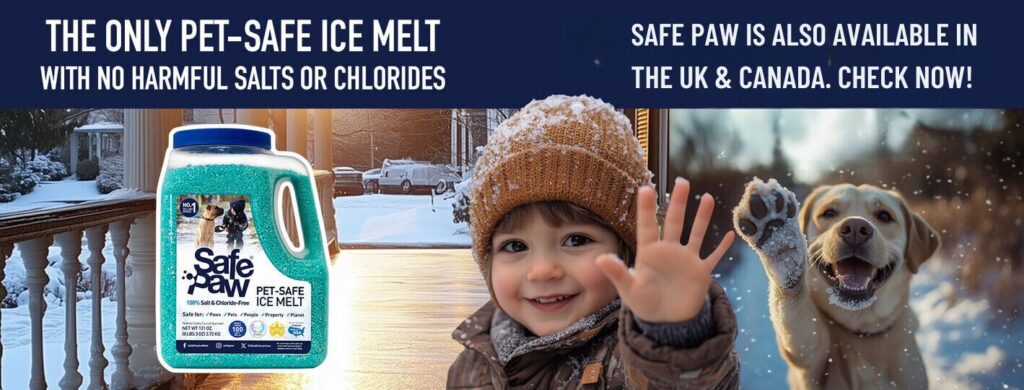
2. Calcium Chloride: Powerful but Problematic
What is Calcium Chloride? What is calcium chloride used for?
Calcium chloride (CaCl₂) is a high-performance ice melt used in extremely low temperatures down to -25°F (-32°C). Due to its effectiveness, it is widely used for deicing highways, airports, and commercial properties. It absorbs moisture from the air, creating an exothermic reaction that generates heat to melt ice quickly.
However, despite its power, calcium chloride pellets comes with serious risks.
The Major Drawbacks of Calcium Chloride flakes
Leaves an Oily Residue
- Calcium chloride absorbs moisture from the air, making surfaces slick and slippery.
- The residue can stick to floors, shoes, and pet paws, leading to unwanted tracking inside homes.
Harmful to Pets
- Severe paw burns and irritation: Calcium chloride draws moisture from anything it touches, causing painful paw cracking and burns in pets.
- Digestive issues: If pets ingest even a small amount, it can cause vomiting, excessive thirst, and gastrointestinal problems.
- Respiratory distress: Inhaling calcium chloride dust can irritate the lungs and worsen breathing conditions.
Concrete Damage & Expensive Repairs
- Calcium chloride increases the freeze-thaw cycle, leading to cracking, scaling, and surface deterioration.
- Concrete treated with calcium chloride ages faster, leading to costly repairs or full driveway replacements.
Pet Safe Ice Melt – Safe Paw
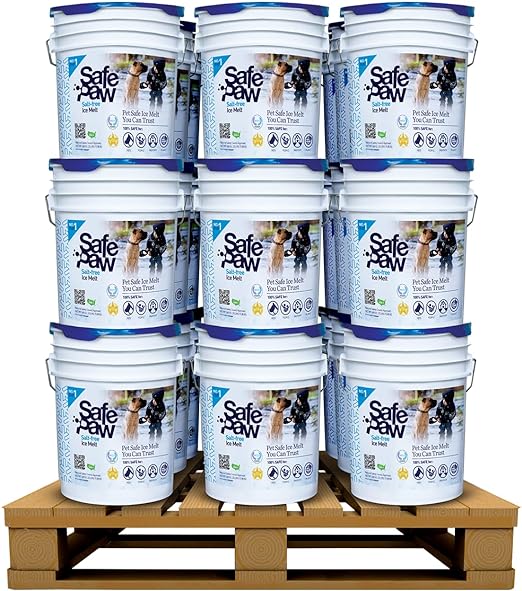
Safe Paw, Child Plant Dog Paw & Pet Safe Ice Melt -35lb, 36 Pails

Safe Paw, Child Plant Dog Paw & Pet Safe Ice Melt -22lb, 100Bboxes
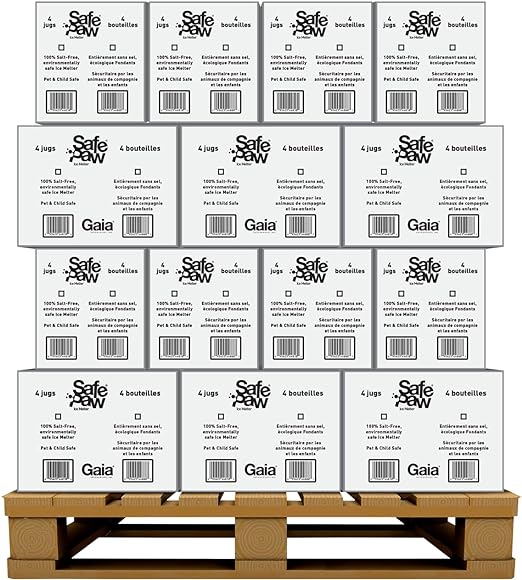
Safe Paw, Child Plant Dog Paw Pet Safe Ice Melt, 160 Jugs
Pet Products Powered By EzPz.pet
3. Magnesium Chloride Brine: The “Safer” Salt That’s Still Harmful
What is Magnesium Chloride?
Magnesium chloride (MgCl₂) is a hygroscopic salt, meaning it absorbs moisture from the air to dissolve ice. It is often marketed as a “pet-safe” alternative to traditional road salts, as it is less harsh than sodium or calcium chloride. However, it is not completely safe—especially for pets, concrete, and the environment.
The Major Drawbacks of Magnesium Chloride
Not 100% Pet-Safe
- Magnesium chloride is less toxic than calcium chloride but still causes paw irritation and mild burns.
- If ingested, it can cause nausea, vomiting, and excessive thirst in pets.
- It leaves a sticky residue, which pets lick off their paws, increasing ingestion risks.
Absorbs Moisture & Creates Slippery Surfaces
- Magnesium chloride pulls moisture from the air, making surfaces wet and slippery.
- This can lead to accidental slips and falls on treated sidewalks and driveways.
Environmental Concerns
- Soil Damage: Magnesium chloride flakes raises soil salinity, making it harder for plants to absorb water.
- Water Pollution: Magnesium chloride flakes runoff contaminates rivers, lakes, and drinking water supplies.
- Corrosion Issues: While less corrosive than sodium chloride, it still damages concrete, vehicles, and metal surfaces over time.
4. Potassium Chloride Salt: Is It Truly a Safer Alternative?
So, what is potassium chloride? Potassium chloride’s salt chemical formula is (KCl). KCl is sometimes marketed as a safer deicer compared to traditional road ice salt (sodium chloride). While it does have a slightly lower environmental impact than some other ice salts, it still carries several drawbacks:
Effectiveness in Cold Weather
- Potassium chloride salt is only effective above 15°F (-9°C), which means in extreme cold, it fails to prevent ice buildup.
- During harsh winter storms with sub-zero temperatures, KCl alone will not keep walkways, driveways, or icy roads ice-free.
Impact on Pets
- Although some claim it to be “safer” for pets, potassium chloride still causes paw irritation.
- It pulls moisture away from surfaces, meaning if animals walk on it, their paws may become dry and cracked, leading to pain and discomfort.
- If ingested, it can contribute to dehydration and stomach upset in pets.
Damage to Plants and Soil
- Potassium chloride affects soil health when used in large amounts.
- It builds up in the ground, altering potassium levels and harming plant life, making it unsuitable for areas near gardens or lawns.
- Runoff from melted snow containing KCl can pollute water sources, harming aquatic life.
While it might be slightly less harsh than calcium chloride pellets or sodium chloride, potassium chloride is not truly a pet-safe or plant-safe option.
Gaia Enterprises Inc. delivers 100% pet-safe and environmentally friendly winter products. Safe Paw, our flagship product, is the #1 selling pet-safe ice melt that does not harm pets, safe if ingested, and safe on all types of concrete.
5. Heated Driveway Mats: A Luxury or a Necessity?
Heated driveways sound like an ideal solution, but they come with a hefty price tag and practical limitations.
Installation Costs and Complexity
- A heated driveway requires electric or hydronic heating elements embedded under the pavement, which must be installed during construction or require major renovations.
- The average installation cost ranges between $12,000-$25,000, making it one of the most expensive solutions for snow and ice management.
- If the system fails, repairs can be costly and disruptive.
Energy Consumption and Ongoing Costs
- Electric-based heated driveways consume large amounts of power, which significantly increases energy bills, especially in colder months.
- Hydronic systems, which use heated water flowing through pipes under the pavement, also require energy and ongoing maintenance.
Limited Functionality
- Heated driveways only work on the driveway—they don’t help with sidewalks, steps, porches, or pathways, meaning additional snow removal methods are still needed.
Heated driveways are certainly effective, but they are not a realistic solution for most homeowners due to their high upfront and maintenance costs.
6. Snow Melting Mats & Heated Non-Slip Stair Treads: Convenient, But Limited
Snow melting heat mats are portable electrically heated pads designed to be placed on driveways, walkways, or staircases. While they offer some advantages, they are not a universal solution for winter weather.
Portable and Electric Heating Pads: A Convenient Heat Source
Portable and electric heating pads are widely used in winter for providing localized warmth. These heating pads come in various sizes and designs, catering to different needs—whether for personal use, pet care, or de-icing applications. Portable heating pads are often battery-operated or rechargeable, making them easy to carry and use without relying on an electrical outlet. They are commonly used for relieving muscle stiffness, keeping pets warm, or even preheating car seats on frigid mornings. Some advanced versions include adjustable heat settings and auto shut-off features for safety. While they offer immediate comfort, their effectiveness is limited to small areas, and they require regular recharging or battery replacements.
Electric heating pads, on the other hand, offer continuous heat supply as long as they remain plugged in. They are particularly useful in home settings where individuals seek relief from cold weather aches or use them for targeted warmth in outdoor enclosures like garages or pet shelters. Some homeowners attempt to use heating pads to melt ice, but this method is neither practical nor energy-efficient. Unlike traditional deicers, heating pads do not distribute heat evenly over large surfaces, and they pose potential fire hazards if left unattended. Additionally, excessive reliance on electric heating solutions can increase energy bills significantly. While these pads serve a purpose in providing warmth, they should not be mistaken for effective outdoor ice management tools.
Non-Slip Stair Treads: A Practical Safety Solution for Winter
Non-slip stair treads are a simple yet effective way to enhance safety on icy or snow-covered steps during winter. These treads, often made from rubber, vinyl, or heavy-duty adhesive materials, provide extra grip, reducing the risk of slips and falls—especially in high-traffic areas like porches, decks, and commercial entrances. Some non-slip treads feature abrasive grit textures, while others use water-resistant rubberized surfaces for added traction. Unlike traditional deicing methods, stair treads don’t melt ice but instead offer immediate stability by preventing direct contact with slippery surfaces. However, while they improve traction, their effectiveness can be limited in extreme weather conditions, as snow and ice may accumulate on top of them, requiring regular maintenance and clearing. For best results, non-slip stair treads are often used in combination with ice melts or heated stair mats to keep stairs clear and safe throughout the winter months.
Pros:
Instant Ice Melting – They start melting ice as soon as they are powered on, making them useful for high-traffic areas.
Pet & People Friendly – Since they don’t use chemicals, they are safe for both pets and humans.
Easy to Use – They don’t require rock salt spreader for spreading or manual labor, making them convenient for homeowners who prefer to avoid snow shoveling or using deicers.
Cons:
Expensive – A single mat can cost anywhere between $100-$300, and covering an entire driveway or walkway requires multiple mats, making it an extremely costly solution.
High Energy Consumption – Just like heated driveways, these mats require electricity, which increases monthly utility costs.
Limited Coverage – They only work where they are placed, meaning if snow piles up around them, ice can still accumulate.
Overheating Risks – Leaving them on for too long poses a fire hazard and can damage some surfaces if used improperly.
Snow melting mats provide quick relief for small areas, but they are not a practical long-term or large-scale solution for handling winter ice and snow.
7. Best Snow Shovel & Traction Aids (Kitty Litter, Sand, Walk on Ice)
For those who prefer to avoid chemicals or technology look for best snow shovels. However, it has its own set of challenges.
Physical Strain and Health Risks
- Snow shoveling is physically demanding, and if done improperly, it can lead to muscle strains, back pain, and even heart attacks.
- Cold temperatures increase blood pressure and heart rate, making it particularly dangerous for older individuals or those with heart conditions.
Time-Consuming
- Clearing snow manually takes significant effort and time, especially after heavy snowfall.
- Without pre-treatment, snow can harden into ice, making it even harder to remove with a shovel alone.
Ineffective for Ice Removal
- Even the best of the best snow shovels only remove loose snow—they cannot break through thick ice layers.
- In extreme cold, packed snow turns to ice, requiring additional traction or melting agents to make surfaces safe.
While snow shoveling is affordable and low-tech, it is not the best solution for frequent or heavy snowfall.
While it’s a physical and time-consuming task, it is often the first line of defense against snow accumulation. However, shoveling alone does not prevent ice buildup, leading people to seek additional traction aids like kitty litter, sand, or gravel. These alternatives, while commonly used, come with their own limitations:
- No Ice Melting Properties – Traction aids do not melt ice; they merely provide a temporary grip. The underlying ice remains, posing continued risks.
- Messy Residue – Sand, gravel, and kitty litter can create a slushy mess as temperatures fluctuate. Once the snow melts, these materials are left scattered, clogging drains and making cleanup a hassle.
- Limited Effectiveness in Extreme Cold – In deep freezes, snow and ice can refreeze over traction materials, rendering them ineffective. The particles can also compact into a slippery layer, increasing rather than decreasing fall risks.
For those looking for better traction solutions, specialized traction agents like Walk on Ice offer a more efficient alternative. Unlike sand or kitty litter, Walk on Ice provides superior grip without the messy residue, keeping pathways and driveways safer during icy conditions.
8. Pet Heating Pads & Outdoor Dog Kennel with roof
Keeping pets safe and warm during winter is a major concern for pet owners. Many rely on heated pet mats, insulated blankets, and outdoor dog kennel with roof to maintain warmth for animals that spend time outside. While these solutions help combat cold temperatures, they do not address the dangers of ice buildup:
- Heated Mats Only Provide Warmth – A heated pet mat can keep an animal’s resting spot comfortable, but it does nothing to prevent ice accumulation on surrounding areas where pets walk, increasing the risk of slips and injuries.
- Outdoor Kennels Are Limited in Protection – Insulated kennels may protect pets from wind and snow but do not shield them from exposure when they need to step outside. Icy patios, pathways, and driveways remain hazardous for pet paws.
- Risk of Frostbite & Chemical Burns – Even with adequate shelter, pets still venture outside for bathroom breaks or walks. Exposure to toxic ice melts can lead to chemical burns on paws or poisoning if licked off fur.
To fully protect pets in winter, it’s important to pair warming solutions with an ice melt that is safe for animals. Ensuring walkways are free of slippery ice while using non-toxic, pet-friendly products can help prevent winter-related injuries and illnesses.
Many people believe all deicers are created equal, but different chemical compounds have varying effects on pets, concrete, and the environment. Here’s how common ice-melting agents stack up:
- Sodium Chloride (Rock Salt) – Cheap and widely used, but highly corrosive to concrete and metal, damaging driveways and vehicles over time. It is also toxic to pets, causing paw burns and dehydration.
- Calcium Chloride – Effective at very low temperatures but harsh on concrete and leaves behind an oily residue that can cause slipping. It can also cause burns on pet paws upon contact.
- Magnesium Chloride – Marketed as “pet-safe,” but it absorbs moisture, creating slippery surfaces. It can still irritate pet paws and contribute to soil and water contamination.
- Potassium Chloride – Less corrosive than some salts, but only works at higher temperatures (above 15°F) and can damage plants when over-applied.
Conclusion: Choosing the Best Winter Safety Solution
When it comes to winter safety, there are many approaches to managing ice and snow. From heated driveway mats to traction aids, each method has advantages and drawbacks. However, the best approach combines effective ice melting, safety for pets and the environment, and long-lasting protection against refreezing.
By prioritizing non-toxic, chloride-free solutions, you can protect your family, pets, and property while reducing environmental damage. Whether using traction aids, safe ice melts, or preventive measures, choosing the right winter care method can make all the difference in staying safe and prepared during harsh conditions.
FAQs
Stay safe and confident this winter with Traction Magic!
This innovative, 100% natural product offers instant traction on any icy surface. Whether you’re navigating your sidewalk, steps, or driveway, Traction Magic helps you stay upright and prevents falls.
Other Ice Melt Products
Walk On Ice
Prevent slips at home, work or on the go, The handy disposable canister can be taken everywhere, with the same 100% naturally occurring minerals that provide instant traction on ice or snow.
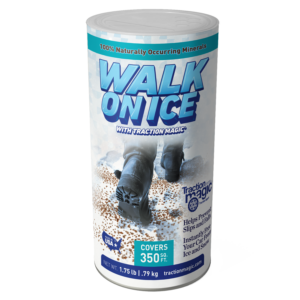
Safe Thaw
Imagine an ice melt you can put down and never worry about. It won’t harm pets, kids and your property. That’s Safe Thaw. Unlike anything else on the market, Safe Thaw can change how winter affects our planet.
